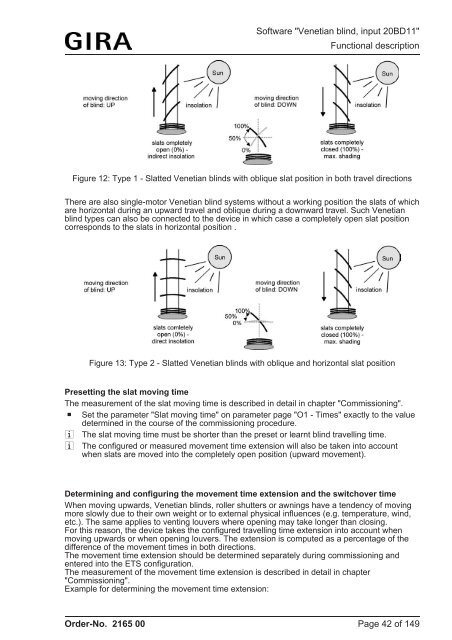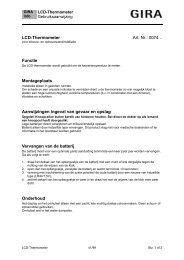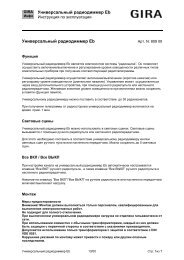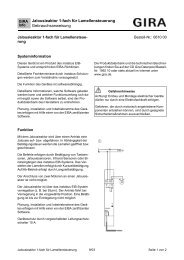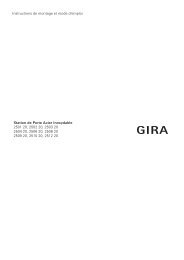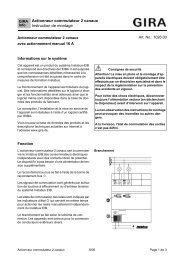Blind actuator 1-gang flush-mounted Order-No. 2165 00 - Gira
Blind actuator 1-gang flush-mounted Order-No. 2165 00 - Gira
Blind actuator 1-gang flush-mounted Order-No. 2165 00 - Gira
Create successful ePaper yourself
Turn your PDF publications into a flip-book with our unique Google optimized e-Paper software.
Software "Venetian blind, input 20BD11"<br />
Functional description<br />
Figure 12: Type 1 - Slatted Venetian blinds with oblique slat position in both travel directions<br />
There are also single-motor Venetian blind systems without a working position the slats of which<br />
are horizontal during an upward travel and oblique during a downward travel. Such Venetian<br />
blind types can also be connected to the device in which case a completely open slat position<br />
corresponds to the slats in horizontal position .<br />
Figure 13: Type 2 - Slatted Venetian blinds with oblique and horizontal slat position<br />
Presetting the slat moving time<br />
The measurement of the slat moving time is described in detail in chapter "Commissioning".<br />
o Set the parameter "Slat moving time" on parameter page "O1 - Times" exactly to the value<br />
determined in the course of the commissioning procedure.<br />
i The slat moving time must be shorter than the preset or learnt blind travelling time.<br />
i The configured or measured movement time extension will also be taken into account<br />
when slats are moved into the completely open position (upward movement).<br />
Determining and configuring the movement time extension and the switchover time<br />
When moving upwards, Venetian blinds, roller shutters or awnings have a tendency of moving<br />
more slowly due to their own weight or to external physical influences (e.g. temperature, wind,<br />
etc.). The same applies to venting louvers where opening may take longer than closing.<br />
For this reason, the device takes the configured travelling time extension into account when<br />
moving upwards or when opening louvers. The extension is computed as a percentage of the<br />
difference of the movement times in both directions.<br />
The movement time extension should be determined separately during commissioning and<br />
entered into the ETS configuration.<br />
The measurement of the movement time extension is described in detail in chapter<br />
"Commissioning".<br />
Example for determining the movement time extension:<br />
<strong>Order</strong>-<strong>No</strong>. <strong>2165</strong> <strong>00</strong><br />
Page 42 of 149


